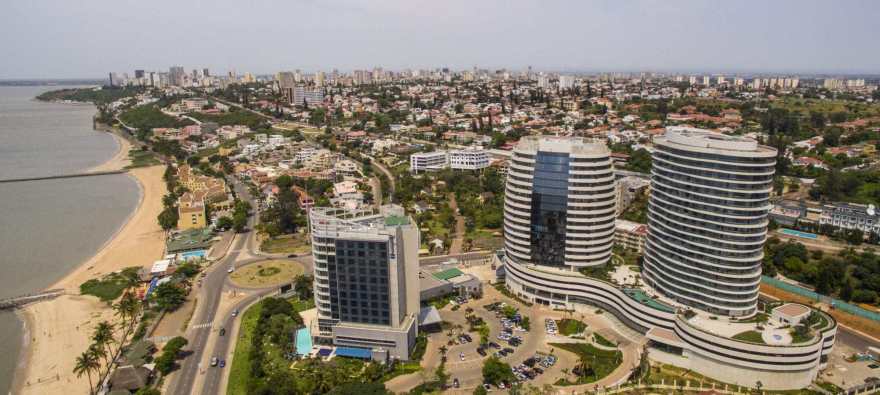A tarred road, culminating in Africa’s longest suspension bridge, now connects northern KwaZulu-Natal and Maputo — the latest in a line of infrastructure upgrades centered on the Mozambican port city
Southern African, European, Middle Eastern and Chinese companies have come together to transform the primary Mozambican port of Maputo into a facility capable of handling the largest cargo ships afloat. Even more critically, the new suspension bridge over the bay is the final stretch of a roads project that for the first time directly links Durban to Maputo.
Travelling time between Maputo and Durban will be shortened dramatically, from 9½ hours to just five — equivalent to the Durban-Johannesburg trip. But it’s still unclear to what extent the development is expected to grow trade and tourism along the region’s coast. Bongani Tembe, spokesperson for KwaZulu-Natal economic development MEC Sihle Zikalala, said that trade and tourism impact projections for the new corridor have not yet been done.
The port rehabilitation project and its associated link roads and urban renewal together form Mozambique’s biggest public works project.
Dredging of the harbour channels and quayside berths to allow for deeper-draught vessels started in 2011. In 2012, two new tugs were purchased at a combined cost of $15m; Emirati firm P&O Maritime was contracted to provide pilotage, mooring services, and the crewing and maintenance of the tugs, pilot boats and mooring craft.
Then, under an $86m contract awarded to Jan de Nul Dredging Middle East FZE, the harbour’s access channel was dredged from a depth of 11m to 14.4m. The project, started in May 2016, was completed in December that year.
The dredging alone resulted in an immediate rise in traffic, and a 40% increase in cargo capacity in Maputo, says Maputo Port Development Company (MPDC) executive director Osório Lucas.
The MPDC is a partnership between state-owned railway company Caminhos de Ferro de Moçambique, with a 49% shareholding, and Portus Indico — comprising SA’s Grindrod freight logistics firm, Emirati port management company DP World and transport company Mozambique Gestores — with 51%. It was granted a 15-year concession for the port in April 2003, extended in 2010 for another 15 years, with an option for another decade of operation after 2033.
The port’s capacity is now being expanded again, with the dredging of quayside berths to a depth of 15m; the upgrading of the container depot; the extension of the current car, ferry, coal and container terminals; the extension of quays and rail sidings; and the refurbishment of old warehouses and construction of new ones.

The quay rehabilitation should be complete by December 2019. At $2bn, these improvements will put Maputo in the same league as Durban and Richards Bay.
Shipping magazine Port Strategy reports that DP World’s container terminal will increase its capacity from 150,000 to 250,000 containers — with potential to expand to 450,000 if the market grows as expected. It says chrome ore and ferrochrome volumes railed to the port “almost doubled from 411,000t in 2016 to nearly 1Mt in 2017”.
On June 5, the Port of Maputo saw off its first ship loaded with more than 100,000t of cargo — the chrome ore carrier MV Magali, bound for China. Such vessels are classified as capesize — they are too large to traverse the Suez Canal and have to round the Cape of Good Hope instead.
Exiting the port, the Magali passed under the 680m suspended centre of the new 3km, $275m Maputo-Catembe bridge.
Soaring 60m above the waves, the bridge — which opened this month — is Africa’s longest suspension bridge and connects the “City of Acacias” to its southern district of Catembe, across Maputo Bay.
The bridge was built by China Road & Bridge Corp, the engineering and construction contractor.
But with 95% of the funding for the bridge and road links loaned from China, there are concerns that Mozambique will be unable to repay its loans, after revealing $1.4bn in hidden debt in 2016 and $710m in repayment arrears.
In April, Bloomberg reported that total debt to China stood at $2.2bn at 2% interest by the end of 2017; in a debt restructuring agreement, China wrote off $34m and extended its repayment deadline to 2028.
Mozambique hopes rising port tariffs will enable it to repay the debt.
As part of the project, a 120km road now links Catembe to the tourist village of Ponta do Ouro and the Kosi Bay border post in KZN — reducing a traverse of southern Mozambique from six hours on sandy roads to 90 minutes.
Gauff Engineering project director Jörn Seitz says the traffic on the $450m corridor is expected to rise from a new capacity of 2,000 vehicles a day to 6,000 a day within a few years.
Source: africapropertynews







